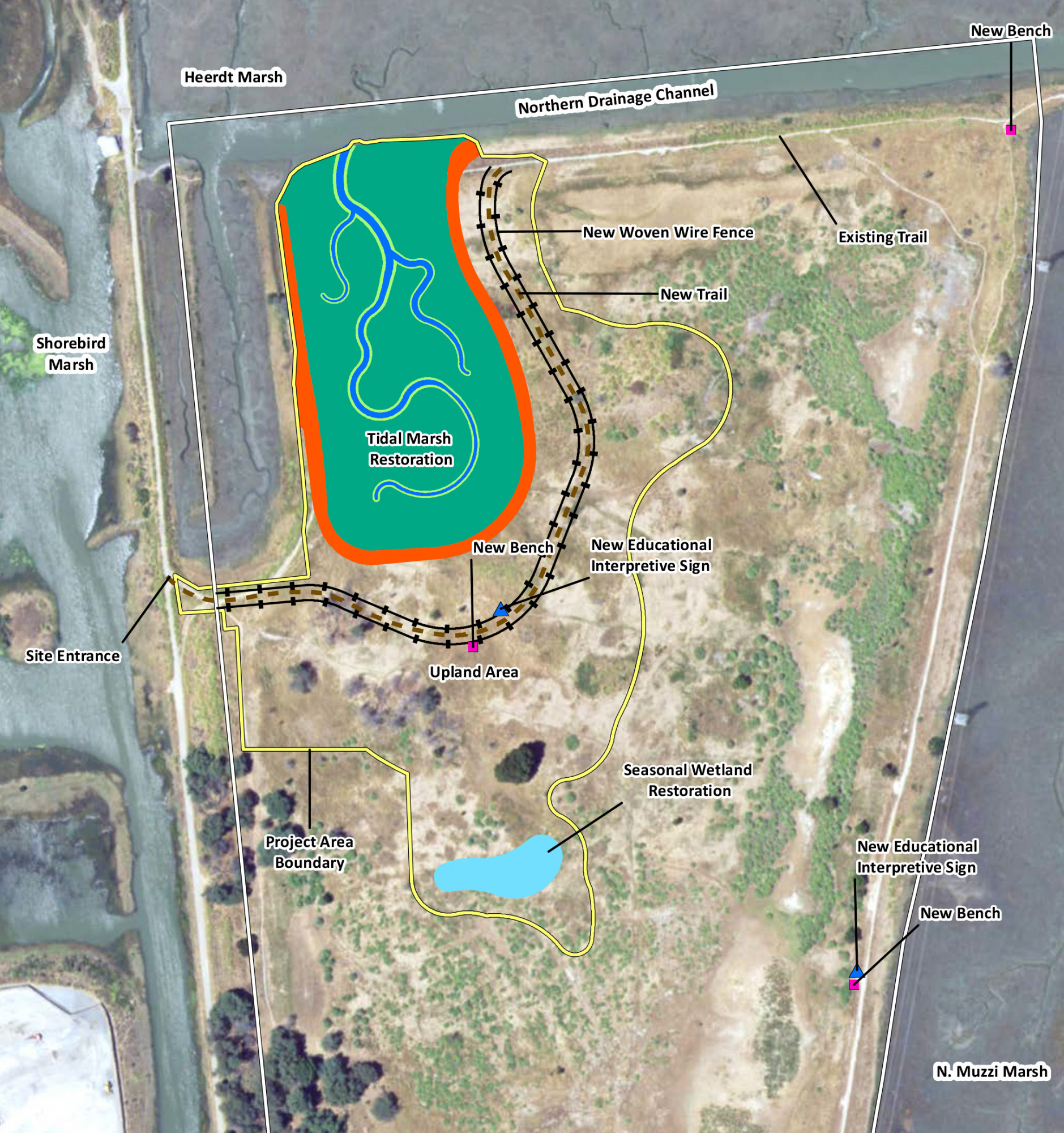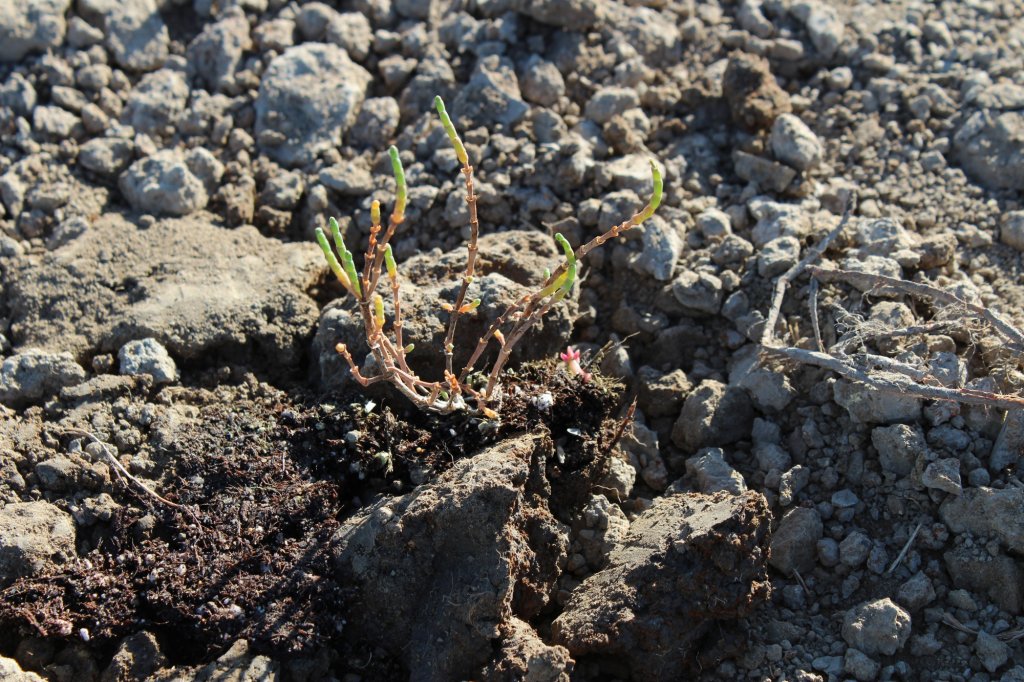Corte Madera Tidal Marsh Habitat Restoration and Public Access Complete
In collaboration with The Golden Gate Bridge, Highway and Transportation District, WRA designed four acres of restored tidal marsh located within the District’s 72-acre property adjacent to the Corte Madera Ecological Reserve. The project reached a significant milestone on December 10, 2020, when the restored marsh was reconnected to the San Francisco Bay through a constructed channel, allowing the marsh to flood during high tides. The restored marsh and surrounding bayfront recreational trail are now open to the public!
Tidal marshes provide a home to many species
Tidal marshes are wetlands, meaning the land stays wet for extended periods of time due to tidal fluctuations. When the tides are high, the marsh is flooded with water that drains during low tides. In addition to providing important habitat and nesting sites for a number of native and endemic species, tidal marshes provide flood protection, erosion control, and stormwater runoff filtration and mitigation. In addition to excavating the fill material covering the historic marshplain and digging out the channel, restoration crews hand-planted over 16,000 individual native plants grown by the native plant nursery Central Coast Wilds.
Construction of the restored marsh
Prior to construction, the project area was isolated from San Francisco Bay tidal waters by a man-made levee created as a disposal site for dredge material. Disturbance to the site’s hydrology and soils converted the vegetation to a mix of grasslands dominated by non-native species, and seasonal wetlands fed by rainfall rather than tidal waters. This conversion made the site inhospitable to some of the region’s most iconic native tidal marsh wildlife species such as the California Ridgway’s rail (Rallus obsoletus obsoletus) and salt marsh harvest mouse (Reithrodontomys raviventris), both Federal-listed endangered species. The restoration effort focuses on re-creating the topography, tidal hydrology and native vegetation that create habitat and food for these vulnerable and previously-displaced species.
Tidal marsh design
WRA restoration specialists, including engineers and landscape architects, designed the restored tidal marsh to replicate the marshplain and channel elevations of an adjacent undisturbed tidal marsh. Doing so ensures that the restored marsh will function in the same way and provide the same ecological services. The tidal marsh design includes a channel that winds throughout the site, carving out fingers where bay water flows in at high tide. In addition to excavating the fill material covering the historic marshplain and digging out the channel, restoration crews hand-planted over 16,000 individual native plants. At high tide, bay water flows through the channel, saturates the restored marsh and allows the seedlings to grow. Within 5 years the native seedlings are expected to cover 50% of the project site.
The WRA team was tasked with the design, permitting, and construction oversight of the ambitious project. The construction project broke ground in October 2020. Joining forces with restoration contractor Hanford ARC, construction involved excavation of the dredge material down to appropriate tidal elevations and reuse of this soil to create an elevated berm to the east and south of the restored marsh. WRA crews took special care to avoid disturbing any wildlife by utilizing a biological monitor on site during the process, one of the environmental permit requirements of the project. Next came the digging – the tidal marsh channel was excavated, and finally native plant species such as California pickleweed (Salicornia pacifica), western marsh rosemary (Limonium californicum), saltgrass (Distichlis spicata), and fleshy jaumea (Jaumea carnosa) were planted in the new marshplain.
By breaching the northern berm of the site, the newly restored tidal marsh was connected to the adjacent tidal channel leading to the bay. Now, at each high tide, the planted native seedlings are bathed in saltwater, helping them to grow and spread throughout the area.
In order to prevent erosion of the new habitat, straw wattles (also called fiber rolls) were laid out in concentric circles surrounding the flooded marsh. These straw-filled bags resemble sausages and are used to stabilize the new shoreline. The straw wattles are made from organic matter and will eventually decompose entirely. We are pleased to see that the new grass seeded over the area has established very well in only a couple of months! Shorebirds and waterfowl such as bufflehead ducks, geese and sandpipers can be found enjoying the newly established habitat at the site. The restoration area and plantings will be monitored for several years after construction to help ensure successful establishment of the restored marsh.
A new trail and recreational amenities for visitors to enjoy
Improving the recreational amenities for visitors began after construction of the tidal marsh was completed. The existing recreational trail located at the site was greatly improved with new educational signage, trash receptacles, and benches for visitors to appreciate. The new path surrounding the restored marsh is wider and provides great viewing access to the new tidal marsh habitat and the bay. Construction teams were able to complete the project before the Ridgway’s rail breeding season in February, which avoided unnecessary interruptions to the wildlife. Visitors are now able to birdwatch and enjoy the serenity of the fully restored tidal marsh.
Special thanks to the District and our project partners for the opportunity to support this important regional work.












